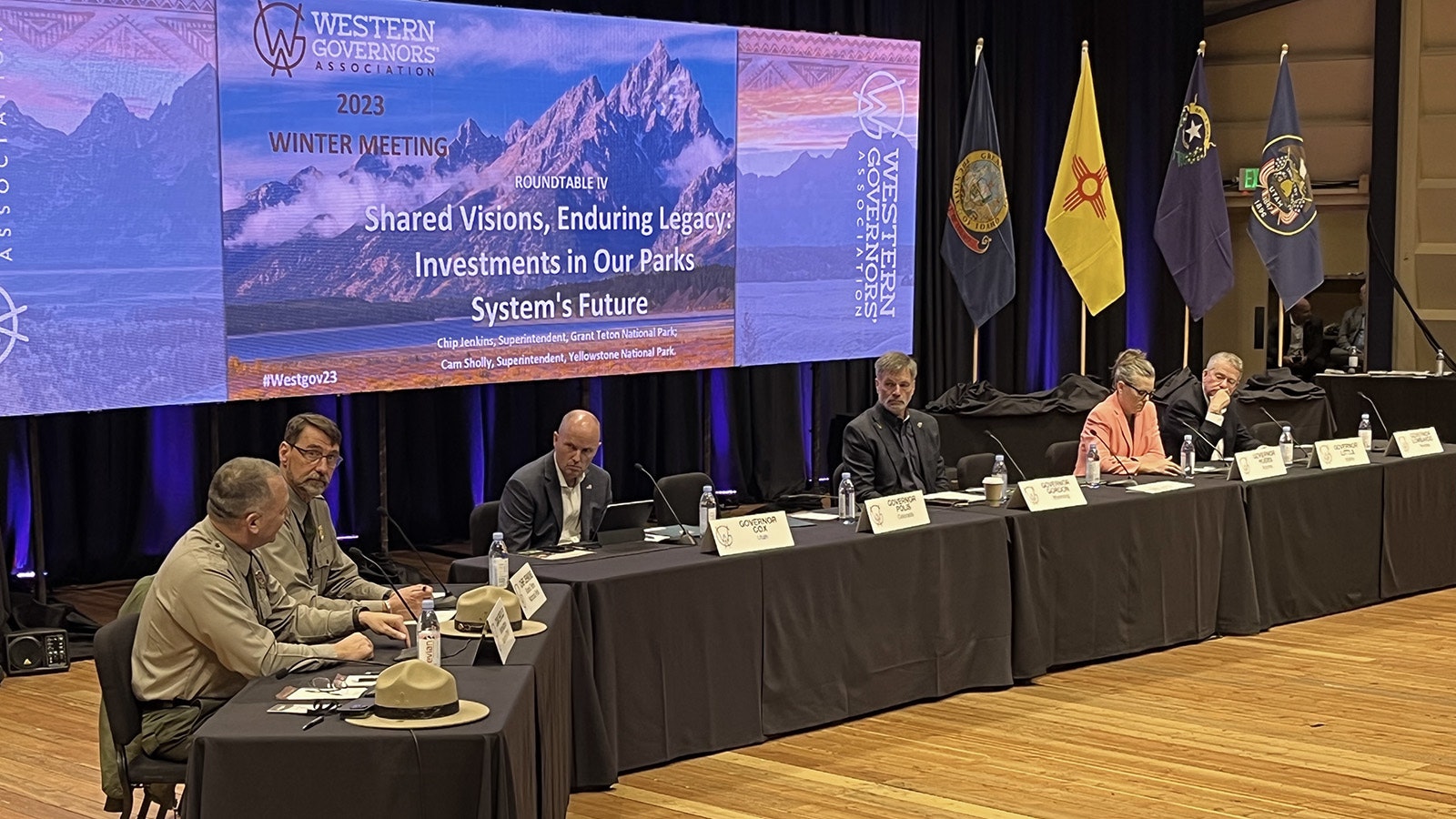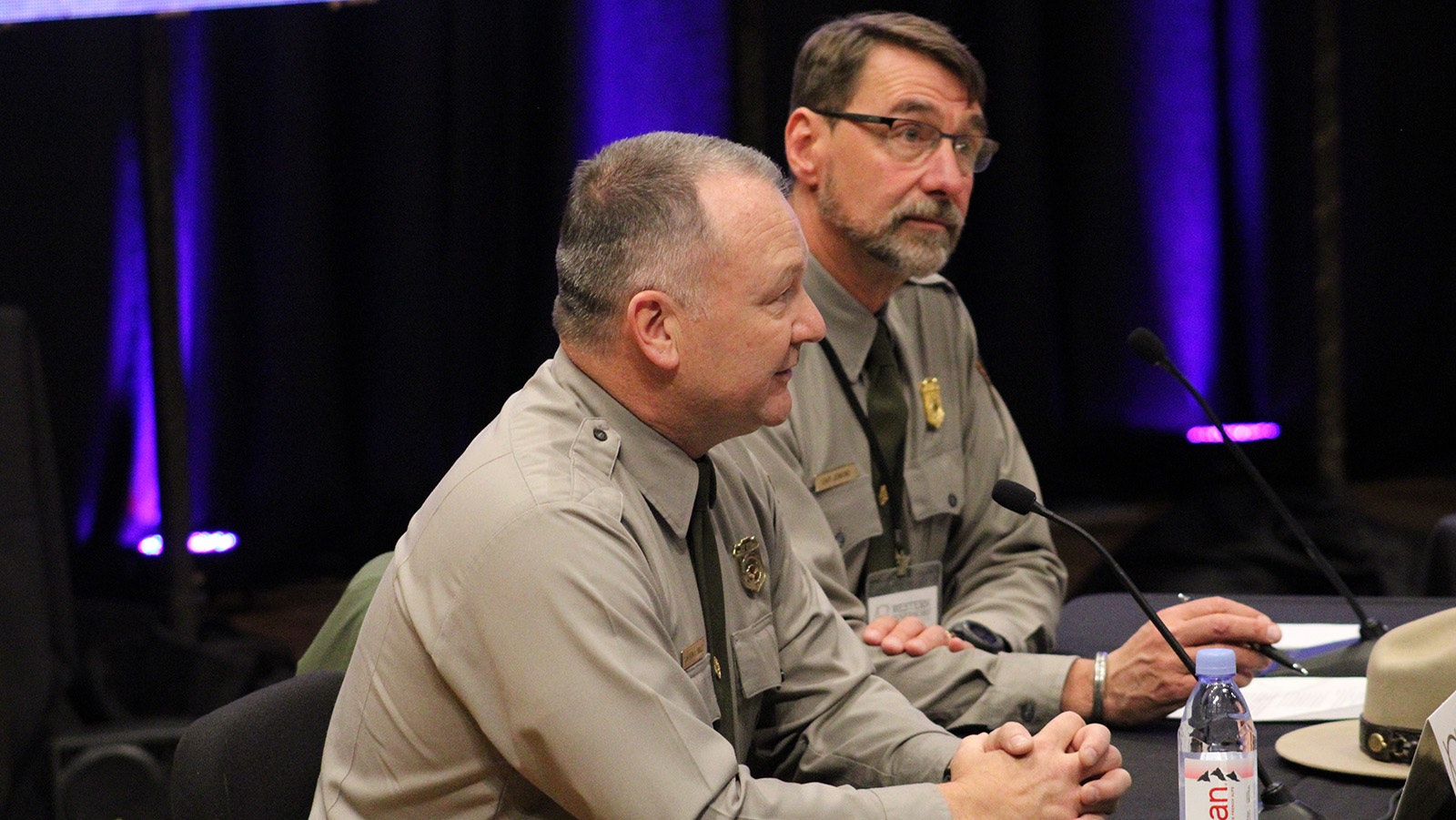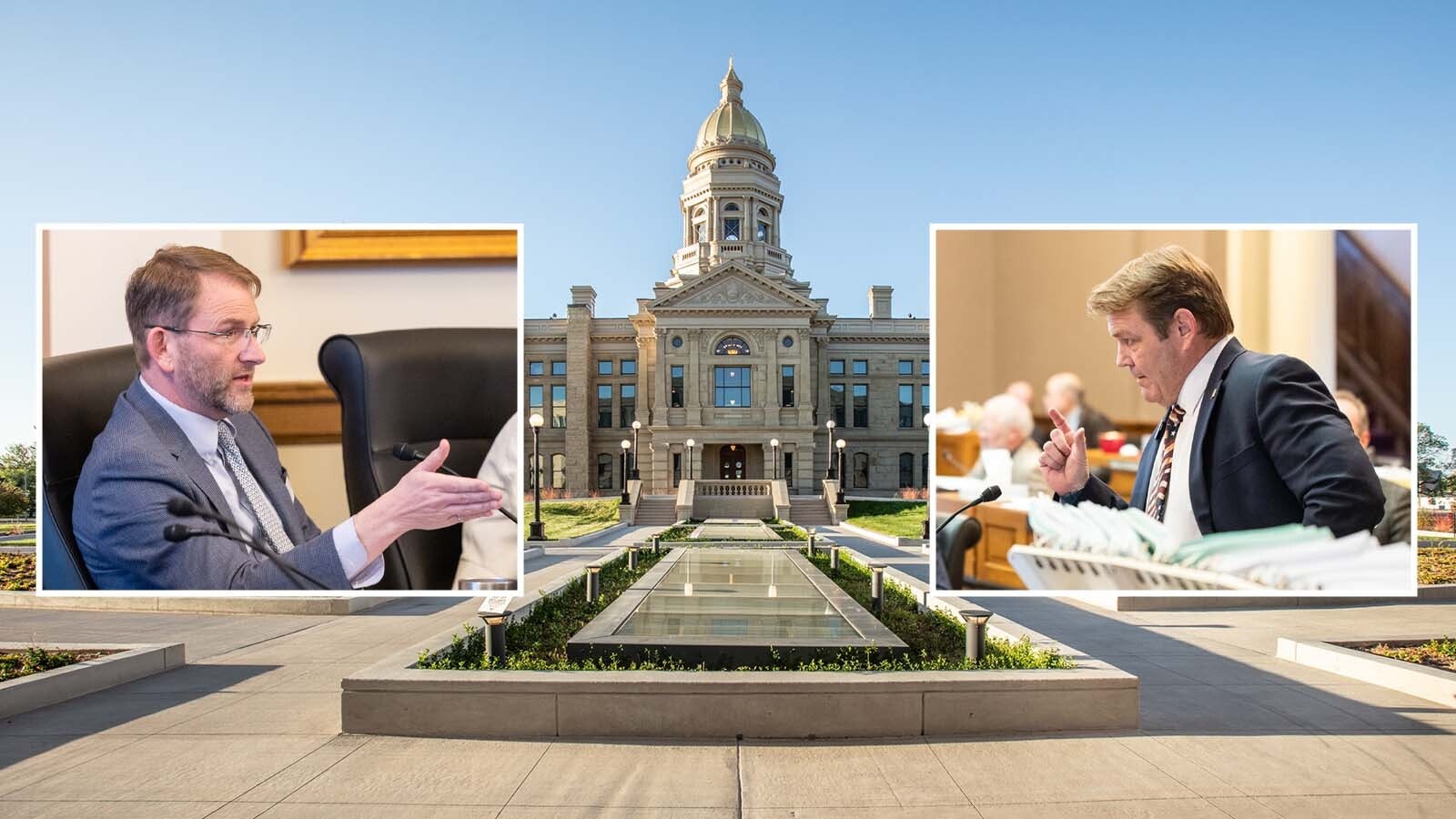JACKSON — Yellowstone National Park has always been a popular destination for visitors, but attendance over the last decade or so has increased much more quickly — so much so it’s on pace to hit 5 million visitors after reading 4 million only eight years ago.
Yellowstone Superintendent Cam Sholly told five governors at the Western Governors’ Association conference in Jackson on Tuesday that that it’s time to consider mitigation strategies as the park approaches its visitation critical mass.
In short, the window of encouraging people to make those bucket-list trips to America’s first national park “is shrinking,” he said.
Although Sholly disputes the narrative reported by some in the media that the whole 2.2 million-acre park is overrun with visitors, he said there are major congestion issues at certain times of the year and locations of the park.
“As that visitation increases, it’s going to require us to take more significant actions over time,” he said.

Build Up
Sholly said Yellowstone is one of the few places in the world where a significant population of wildlife and people coexist.
“We’ve got a lot of challenges in front us with how we manage and protect those resources into the future as visitation continues to climb,” he said.
Routinely cleaning hundreds of bathrooms and trash cans is not only an often-thankless task, but also an essential one that can only be accomplished with a certain minimum threshold of employees.
Those are challenges,” Sholly said.
The impacts of having 1 million more people visit Yellowstone than now are sometimes less visible than traffic jams and long lines. Often, it can show up in the park’s sewage.
In 2022, Sholly said the park went through 30 million feet, or 5,600 miles, of toilet paper.
“If you put a million more people in that park per year, flushing the toilet five times per day, what’s it do to your wastewater systems?” Sholly questioned.
He said Yellowstone’s eight wastewater systems were built during a time when the park was getting fewer than 2 million annual visitors.
“You’ve got to build the systems, invest the dollars to accommodate what today’s needs are,” he said.
When Grand Teton National Park Superintendent Chip Jenkins asked the five governors if they think visitation will shrink or grow at national parks in the next five years, they all said they expect growth.
Don’t Blame The Newbies
Sholly also asked for more empathy for first-time visitors to the park, which makes up 70% of Yellowstone clientele.
Many of these people have never seen a bison or elk in the wild and can be oblivious to the hazards they create when slowing or parking their vehicles in the way of traffic. He said these events, popularly known as bear or bison “jams,” should not be conflated with overcrowding in the entire park, where 95% of visitors never travel farther than a half mile from their cars.
“We could cap visitation tomorrow at 2 million and a grizzly jumps out in a part of the park, every single car in that section of road is going to stop,” he said.
Any changes made in Yellowstone ultimately have a trickle-down effect to the park’s gateway communities like Jackson and Cody, Sholly said. Jenkins added that some in Jackson are frustrated about the record crowds that came to the parks in 2020 and 2021.
“If we think that we may be back at that level of visitation at sometime in the future, we have a tremendous gift,” Jenkins said. “We’ve experienced the future and it’s shown us what some of the problems will be.”
Reservation Systems?
Jenkins said developing reservation systems for visitors can be an adequate solution for some parks, but Sholly said that’s not a one-size-fits-all solution as certain gateway communities receive much more visitation than others.
“Ultimately, that conversation has to be driven on the ground by the stakeholders with smart planning over time, with gradual actions,” Sholly said.
Almost all — 96% — of Yellowstone National Park is in Wyoming. Although only 3% of the park is located in Montana, the North Entrance in Gardiner accommodates about 70% of the park’s visitors.
“We need to do something about that,” Gov. Mark Gordon remarked.
At Yellowstone, Sholly said that until recently, the park hadn’t pursued even the most basic traffic mitigation measures such as employing park attendants and managing wildlife jams.

Funding
To handle these pressures, Sholly said the park’s staffing levels must continue to increase along with added infrastructure and other services funded through Congress. He said most infrastructure at national parks was originally built in the early to mid-20th century.
“If you want us to continue to manage effectively, we’ve got to have the resources to do that,” he said.
In 2025, the Public Lands Legacy Restoration Fund will expire, which has delivered more than $4 billion for revitalizing infrastructure in national parks like bathrooms, sewer systems and roads.
“All of the things that are needed for millions of people coming to our parks,” Jenkins said.
Both Sholly and Jenkins are pushing for a renewal of the $1.3 billion annual Restoration Fund, which helped pay for $431 million in projects in Wyoming. One of those is the $118 million replacement of the Yellowstone River Bridge, which connects to the Lamar Valley, one of the most heavily visited parts of the park.
“Not replacing that bridge is not an option,” Sholly said.
Charge More
Gordon said the parks must balance the values of raising entrance rates versus how accessible the parks should be made, the latter a prime consideration in the mission of public lands.
Sholly responded that he understands it’s not a popular consideration to raise rates, but he finds Yellowstone’s current entrance fees to be a bargain.
“If we’re a business and we’re bleeding revenue like we are right now, we’d be shutting stores, laying employees off,” Sholly said. “We’ve got to keep revenue streams up, and that either means through federal appropriations or looking at user fees and entrance fees and are they set at the appropriate level.”
Jenkins also brought up how a shortage of available affordable housinghas discouraged people seeking employment in national parks throughout the country.
In recent years, the National Park Service has invested money in expanding and improving employee housing, including Yellowstone and Grand Teton.
Grand Teton leases a number of apartments in Jackson to combat that community’s affordable housing shortage, which he considers the single greatest pressure on his workforce.
“I would prefer to not be in the housing business,” Jenkins said. “There’s no upside for that for us spending time that way. But in order for us to operate, that’s what we need to be able to do.”
Government Shutdown?
Utah Gov. Spencer Cox asked Sholly and Jenkins what plans they have for future government shutdowns. Neither park superintendent expressed great concern about this possible scenario.
If it does happen, Sholly said he’ll “figure something out” with the governors and leaders of states and communities that border Yellowstone.
“There’s more of a concern of what the actual budget levels are going to be to operate the National Park System than there are fears of actually shutting the government down,” hesaid. “I feel we have the ability to work through it together.”
Jenkins agreed and said he is much more concerned about funding increasing costs at his park such as rising utility rates and cost-of-living increases.
But Jenkins added that every unbudgeted dollar spent in the winter to keep the slim off-season operations of their parks open takes money intended for the heart of the tourist season in the summer.
Although Utah has used its own money to keep its national parks open during past government shutdowns, Montana Gov. Greg Gianforte has opposed this concept, and Gordon hasn’t publicly expressed an opinion either way.
Sholly said the park service has a solid track record for working through unexpected events like government shutdowns and credited Secretary of the Interior Deb Haaland in helping to reopen Yellowstone in 2022 after record-breaking floods ravaged the park.
“She absolutely cleared the way for us to get done what we got done last year,” Sholly said. “Had it not been for support at all levels, all the way up to Washington, members of Congress, there is no way that we would've had 93% of the park reopen in 20 days.”
Leo Wolfson can be reached at leo@cowboystatedaily.com.





